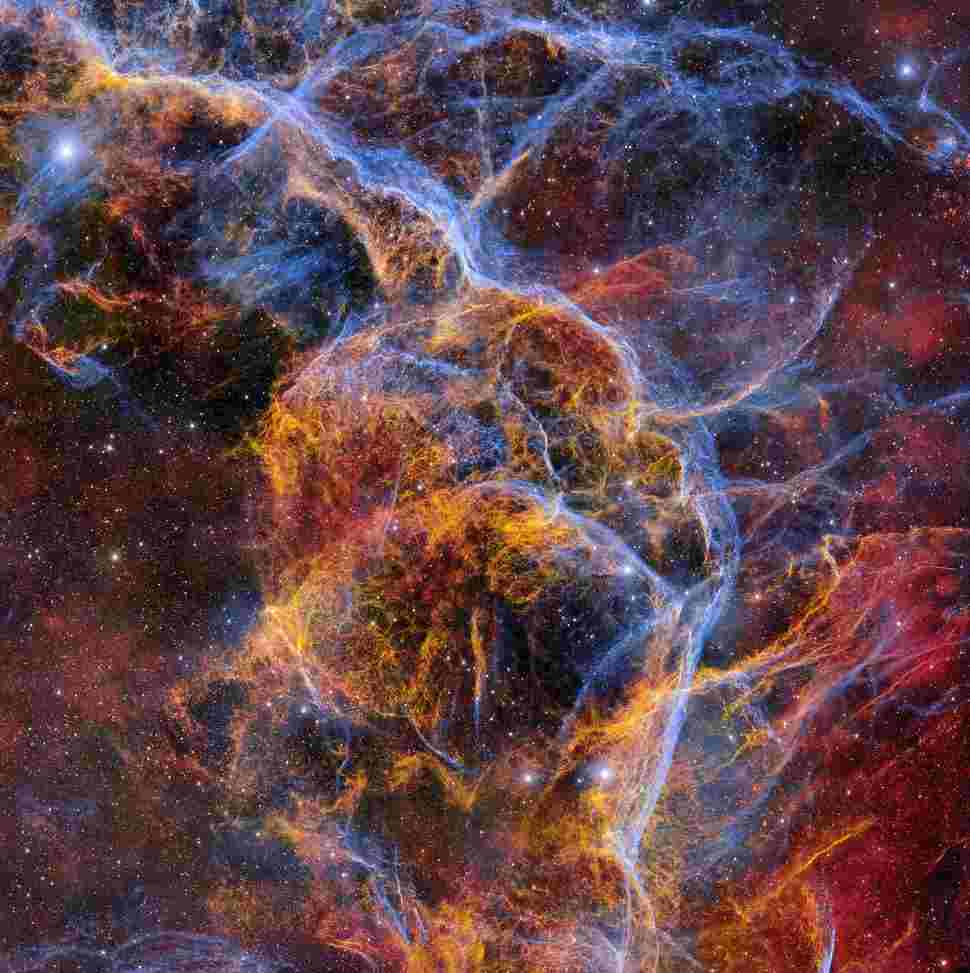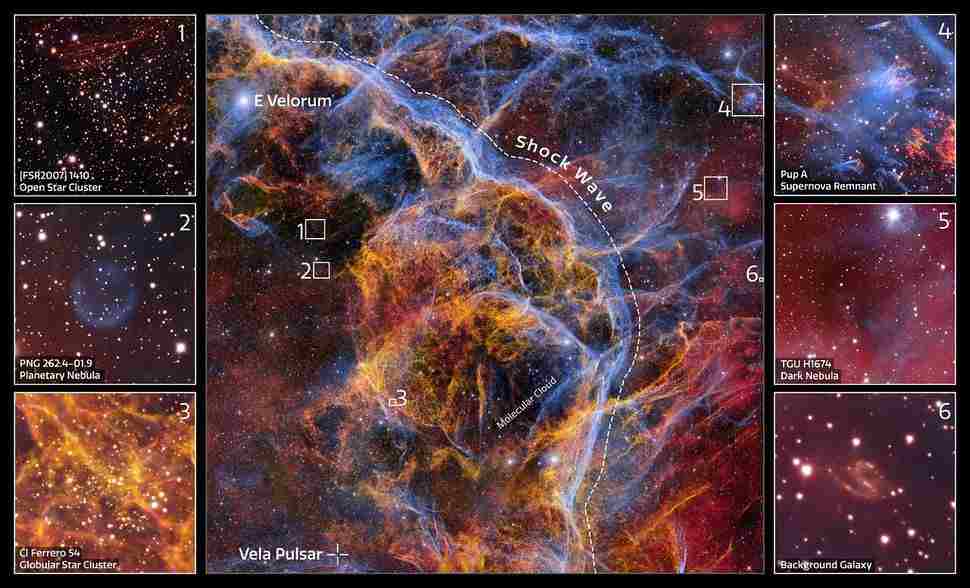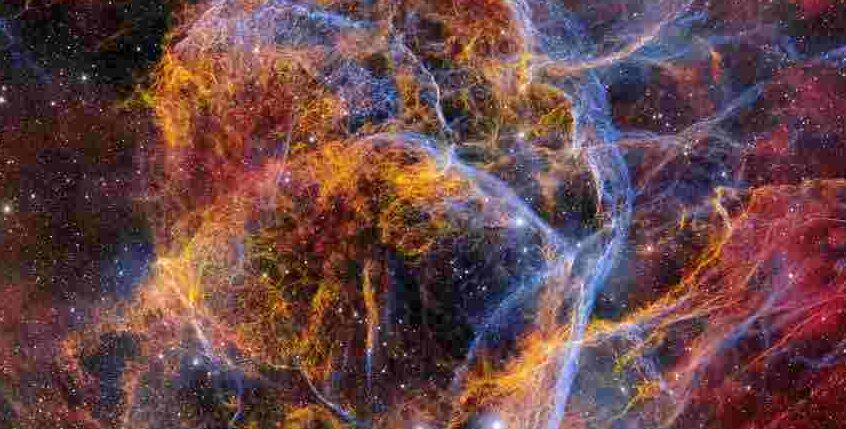“Dark Energy Camera Releases Largest Ever 1.3-Gigapixel Image of a Dead Star’s Stunning Remains”
In the vast expanse of our universe, the remnants of a star that met its explosive demise approximately 11,000 years ago have been captured in an unprecedented detail, presenting a spectacle of dust filaments and gas tendrils that stretch across 100 light-years of space. This celestial phenomenon, known as the Vela supernova remnant, resembles a delicate piece of cosmic lace and represents the scattered ashes of a once-majestic star.

The breathtaking image that brings this cosmic event into focus was captured by the Dark Energy Camera (DECam), mounted on the Victor M. Blanco 4-Meter Telescope at the Cerro Tololo Inter-American Observatory in Chile. Although DECam’s primary mission was to survey distant galaxies to understand the force of dark energy, its capabilities have since been harnessed to explore the universe more broadly. Demonstrating its remarkable power, DECam has produced the largest image ever released by the camera — a staggering 1.3 gigapixels in size, dwarfing the resolution of even the most advanced smartphone cameras.

To encompass the Vela supernova remnant’s vastness and intricate detail, such a large image was necessary. Located about 800 light-years from Earth, the remnant covers an area in the sky 20 times larger than the full moon, offering a unique view into the late stages of a supernova remnant’s evolution and its interaction with the surrounding interstellar medium.
Read Also : AI Proves Proton Model Wrong
The significance of the Vela supernova remnant extends beyond its visual majesty. The shockwave from the ancient stellar explosion continues to expand and collide with the interstellar medium, compressing it and forming the exquisite filaments visible in the image. This process also reveals a rich tapestry of elements, from calcium to silicon, showcasing the creation of heavy elements through stellar fusion and the explosion itself.
Read Also : Mini Brains Created in Lab
At the heart of this cosmic spectacle lies the remnants of the star’s core, now a neutron star just 10 to 12 kilometers across but unimaginably dense. This neutron star, or pulsar, spins at an incredible rate of 11 rotations per second, emitting beams of radio waves that make it a cosmic lighthouse within the remnants of its former self.
The Vela pulsar is not alone in its celestial dance. It generates a pulsar wind nebula, a fascinating structure formed of charged particles that is most visible in X-rays and gamma rays, adding another layer to the complex beauty of the Vela supernova remnant.
Even the constellation housing this cosmic wonder, Vela, carries a story tied to the adventures of Jason and the Argonauts in Greek mythology. Once part of the massive Argo Navis constellation, it was divided into three, including Carina and Puppis, to make the night sky more navigable for astronomers. Today, the story of the Vela supernova remnant and its pulsar wind nebula stands as a modern tale of discovery in the celestial sea, reminiscent of the Argonauts’ quest for the Golden Fleece.
Through the lens of the Dark Energy Camera, astronomers and enthusiasts alike are granted an unprecedented view into the remnants of a star’s catastrophic end and the beauty it leaves behind, underscoring the never-ending quest for understanding in the vast ocean of our universe.





